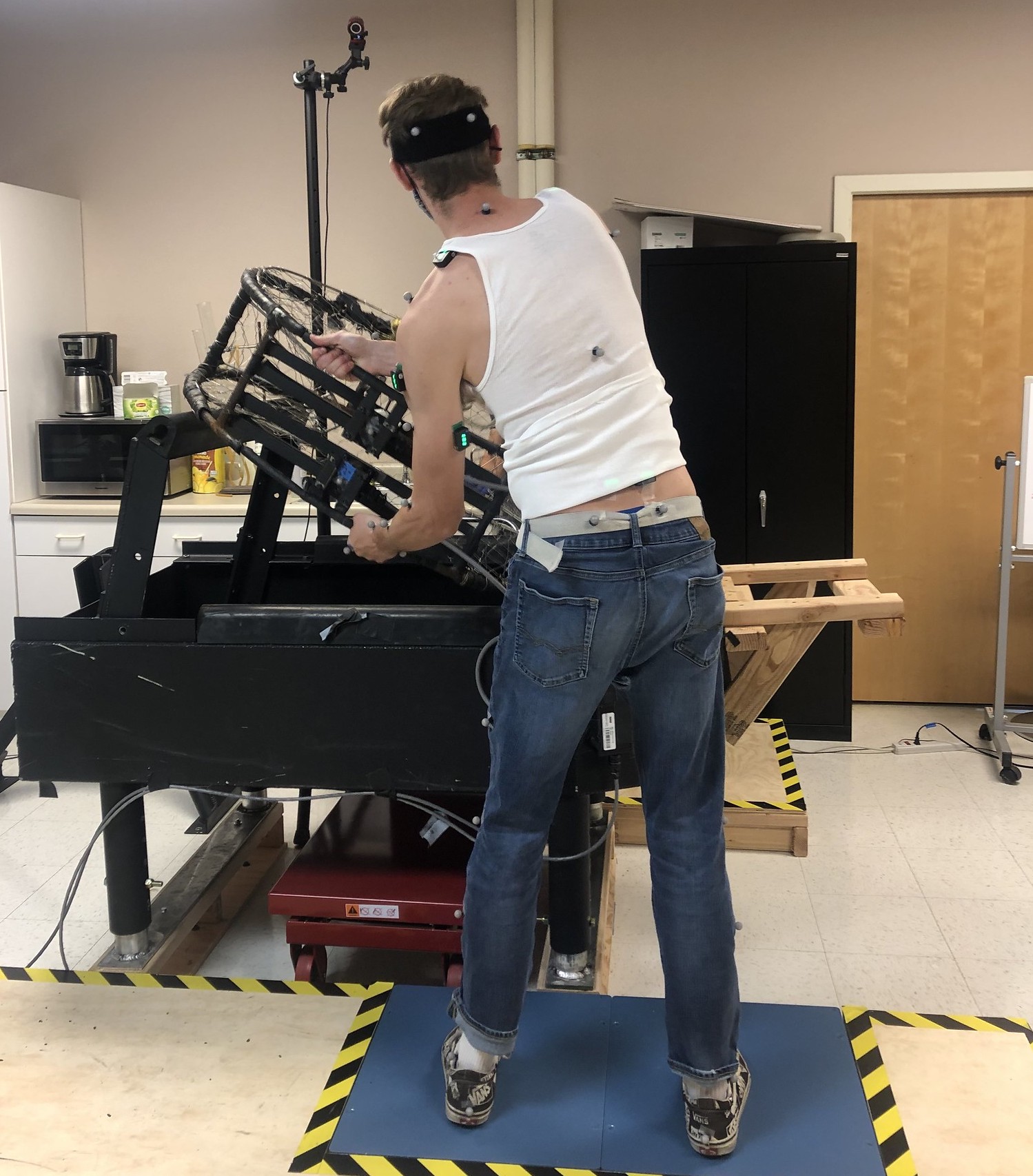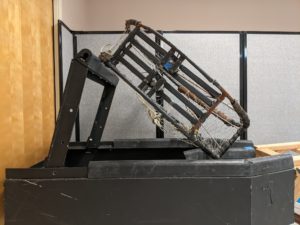
By MOLLY ROSBACH/OSU News Service
Dungeness crab fishermen are at high risk for on-the-job injury, but having a metal bar to bang crab pots against as they work at sea can help prevent them, an Oregon State University study found.
The study sought to determine whether the fishermen-designed “banger bar” actually improves worker safety aboard crab vessels. The metal bar is installed atop the crab-sorting table and makes it easier for fishermen to empty the crab pots they haul up from the ocean floor. But there is no industry standard on whether crabbers install one or how they configure it.
It wasn’t feasible to record precise measurements on the deck of a commercial crab boat, so to capture fishermen’s movement, muscle exertion and injury potential, researchers recreated the deck setting within OSU’s Occupational Ergonomics and Biomechanics Laboratory.

The process of lifting and dumping crab pots puts fishermen at risk for repetitive motion injuries, said OSU associate professor Jay Kim. “This was our very first attempt to quantify those injuries in this fishery using biomechanical measures,” Kim said.
Dungeness crab is one of the most valuable commercial fisheries on the West Coast, producing around 26 percent of all annual fishing revenue. In Oregon, the 2019-20 season brought in $72.7 million, according to the state Department of Fish and Wildlife.
The OSU study came about thanks in part to the Fishermen Led Injury Prevention Program, through which OSU researchers connect with fishermen to work together to improve safety in the industry, said Laurel Kincl, an associate professor of environmental and occupational health.
“We think that bringing science and evidence about interventions helps inform those deckhands, captains, owners and fabricators to quantify the benefit or the risk,” she said.
In surveys and outreach to the crabbing community, researchers learned that whether a vessel had a banger bar installed was based on individual preference. But Kincl said the fishermen who used a bar felt it worked well to prevent injury.
For the study, the research team used electrodes and reflective markers placed on the participants’ bodies along with 3D motion-capture cameras and force plates in the lab to record muscle movement, force and torque data. They tested five conditions for the banger bar, simulating the variation observed on commercial crabbing vessels — no bar, a flat bar at three different heights, and a triangular bar.
Participants had to tilt the crab pot and hit it against the bar or against the surface of the table, repeating the task three times for each of the five conditions, with rests in between. Their muscle activity data was then analyzed to determine which banger bar position required the least exertion.
Researchers found that highest flat-bar setting and the triangular bar were the best for participants’ bodies, showing reduced strain on the shoulders and lower back, compared with no bar or a low bar.
While the participants were not fishermen, researchers had two commercial Dungeness crab fishermen and a fabricator verify the accuracy of the study setup and pot-handling methods prior to collecting data.

“Even though the crab pot was empty and lighter than typical in the field, we still observed significantly high muscle activity and joint moment,” said Kiana Kia, lead author on the study and a postdoctoral researcher. “We can say that the activity could be even higher in the field. This task is really demanding and can increase the risk of injury in the low back and shoulders.”
The work is also asymmetrical, placing a greater strain on one side of the body. For this reason, Kia said, the researchers recommend that fishermen rotate tasks — although, Kincl noted, switching sides on the crab sorting table requires being trained on other tasks on the vessel.
The team is working on a subsequent study focused on how the height of the sorting table affects fishermen’s bodies. Future research will also look at the “block,” the crane mechanism that hauls crab pots up from the water, and how to minimize the risk of injury from pulling in the crab-pot line.




This is the kind of practical research that I like to see coming out of our public universities. I hope our crab fishermen will adopt this if they feel it will help them avoid injury — they face enough risks as it is!